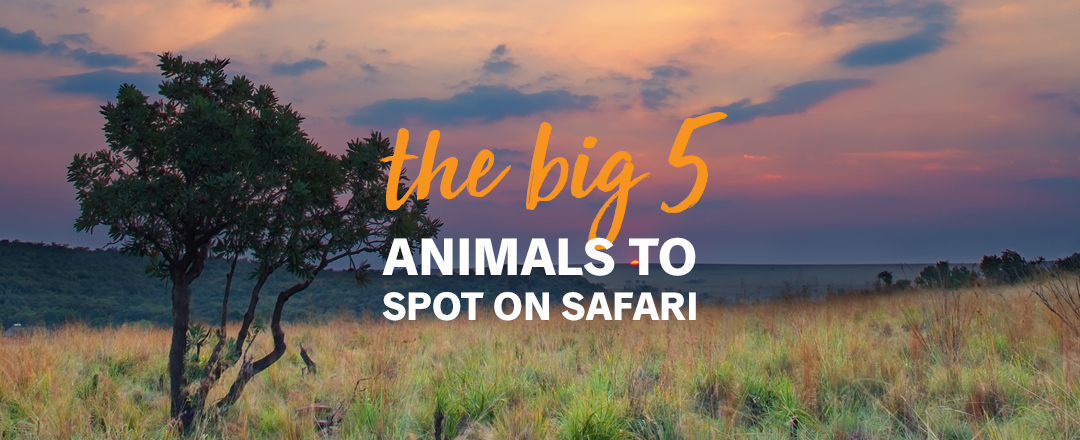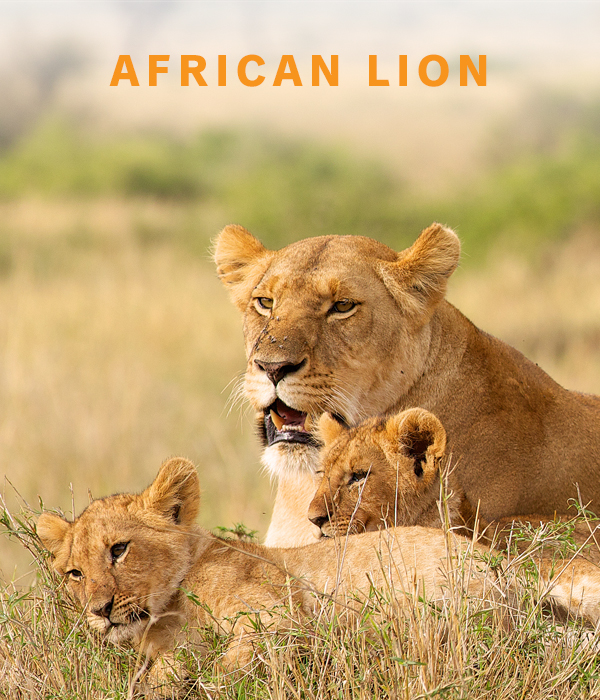What are the Big Five? Originally, it was a term used by hunters to describe the most dangerous game to track and kill. Today, safari companies have borrowed the term to attract tourists, who travel far and wide to get the chance to spot some of Africa’s biggest animals.
Two of the most popular locations to do this are South Africa and Tanzania, where these animals tend to roam.
When you go on safari, a guide will know the best places to see the animals and will help you spot them, but it never hurts to come prepared. Here are some tips for spotting the Big Five on safari, and what you should know about them when you do:
African lion
There are only about 20,000 lions left in the world, so if you get to spot one on safari, it’s a once-in-a-lifetime experience that your children or grandchildren might not get to have.
Here’s what to know before you spot them:
- Most of the lions you see will be in groups of about 15, and most of those will be female. Nomads do exist, though, so you can’t rule out seeing a male on its own.
- Lions are inactive about 20 hours a day. If you see them out and about, you’re catching them at a rare moment of activity.
- They eat giraffes, zebras, wildebeest, and other prey animals. You can sometimes tell a lion is near by seeing a group of prey animals stop and stare.
- Unless they’re hunting, you’re unlikely to see a lion run. They conserve energy, preferring to sneak up on prey and then run in short bursts.
- The lion’s roar can be heard from five miles away. If you don’t see one, you might hear one.
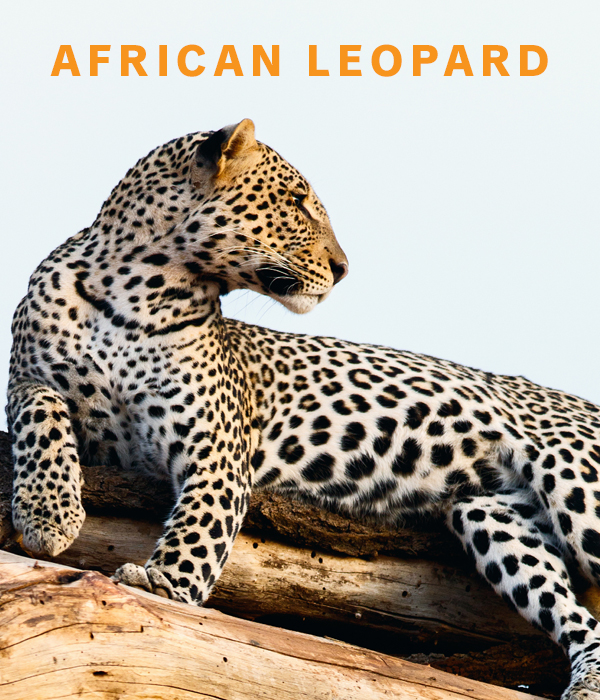
African leopard
Like lions, leopards are a vulnerable species due to hunting and a loss of habitat. There might be about 100,000 left in the wild in Africa, though estimates vary. Several subspecies of leopard are critically endangered, though the African leopard is still widespread, and there’s hope that they can bounce back as a species.
How to spot a leopard:
- Know that they come in two colors: brown with spots, and black. The spotted ones will be harder to see, as this allows them to blend in with the environment.
- Even though they’re widespread, the leopard might be the hardest of the Big Five to spot since they’re nocturnal, meaning they’re only active at night.
- They’re also solitary. You’re very unlikely to see more than one leopard at a time.
- If you do see a leopard during the day, it will probably be up in a tree. Leopards rest in trees during the day, and also hold their kill in trees to protect from scavengers.
- Cubs stay with their mothers for two years, so if you’re really lucky, you can spot two leopards together.
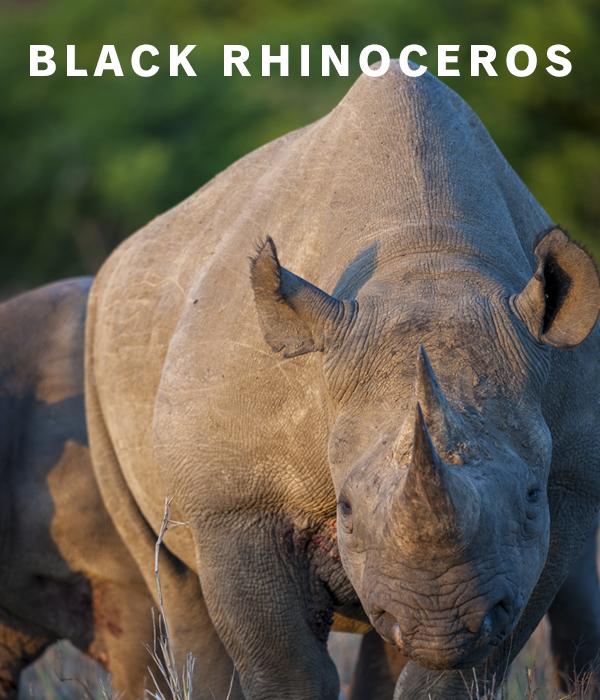
Black rhinoceros
Black rhinos are critically endangered. There are only a few thousand (or fewer) left, due in part to poaching, as their horns are in high demand. Several subspecies have already been declared extinct, and the last male northern white rhino died in 2018.
Here’s some info that could help you spot one:
- Black rhinos aren’t black; they’re actually brown/gray.
- They’re solitary animals, though like the leopard, mothers will travel with their calves for a period, usually around three years.
- They’re herbivorous, mostly eating from trees and bushes, and grazing on grass. They like to hang out in the shade, near water, and in mud.
- Black rhinos are very aggressive, and they’re known to charge, in part due to their poor eyesight. They’re also huge — they can weigh up to 3,000 pounds.
- If you do see one, you’re most likely to see the south-central black rhino, which is the most widespread, especially in South Africa. Even this subspecies, though, only has a population of about 2,000.
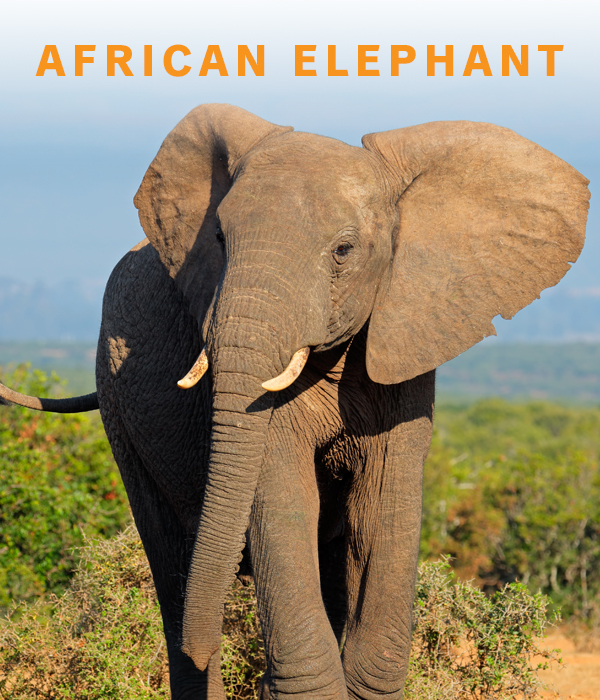
African elephant
Elephants are vulnerable due to hunting and habitat loss. Though their population loss isn’t as egregious as rhinos, lions, or leopards, their numbers are still dwindling at an alarming rate. They might be the most sought-out of the Big Five for tourists, and are no doubt the most majestic. If you see one, put down your phone and take solace in the fact that they might remember you.
What to know about elephants:
- You know that elephants are huge. Weighing in at up to seven tons, they’re the largest land animal in the world. So if you see one, you’ll know.
- You’ll also see several at once: Elephants travel in herds with 6 to 70 members. Some males do go solo, though.
- Elephants are herbivores: You’ll likely see them roaming or eating grass, leaves, or shoots. Due to their size, they don’t sleep much and instead spend 12-18 hours a day eating up to 500 pounds of vegetables.
- Elephants like to stay near water sources, since they drink up to 50 gallons a day and spray themselves with water to stay cool.
- They can communicate over wide ranges, and you may hear the sounds of elephants up to six miles away.
- Sidenote about elephants: They have no predators other than humans. Never buy ivory.
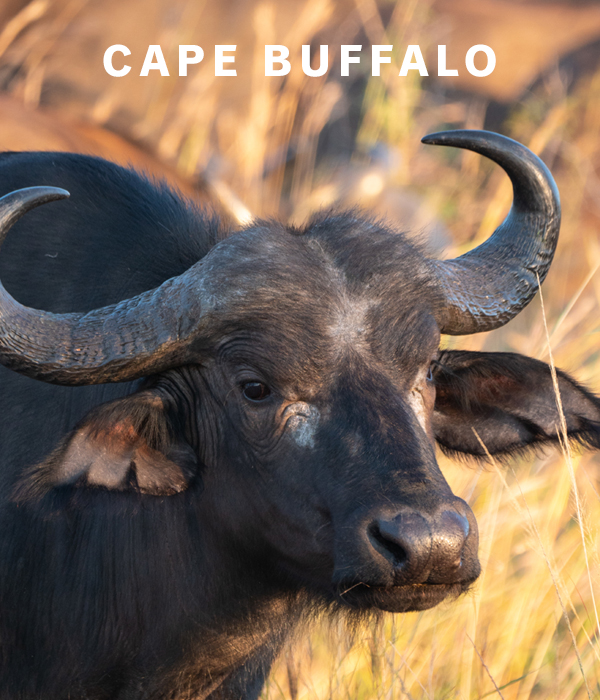
Cape buffalo
Finally, some good news. The cape buffalo is not endangered at all, though they are sought out by trophy hunters due to their reputation as dangerous game.
Here’s how to spot them:
- First of all, note that cape buffalo are very dangerous. You might think of the sharp-toothed predators as the ones you should avoid, but buffalo charge at 35 miles per hour, and by some estimates, kill up to 200 people a year. It’s always important to follow the directions of a safari guide, but definitely avoid encountering a buffalo.
- They travel in herds of related females and their calves, or small herds of bachelor males. The herds are very tight-knit, and buffalo are known to protect each other.
- They prefer to be near water, and spend most of the day grazing on grasses.
- They have very distinctive curved horns that meet in a base called a “boss,” and have coats ranging from reddish-brown to black.
If it’s your dream to see one (or all) of these animals in the wild, you’re in luck: Our tours to South Africa and Tanzania both include safari trips!

